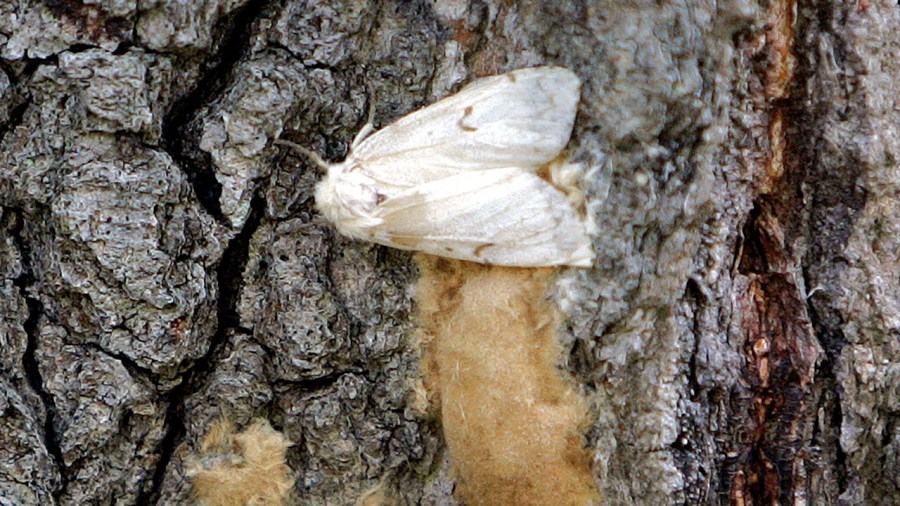COLUMBUS, Ohio (WCMH) – Yellow airplanes armed with a bug-busting concoction will soon dot the skies of central Ohio to take aim at a destructive, plant-eating pest.
Beginning on Monday and throughout the week, the Ohio Department of Agriculture will commission low-flying aircraft across eight counties to scatter an organic mixture atop tree canopies to disrupt the ability of spongy moths – a non-native invasive species – to mate, the department said.

“We’re not going to eliminate spongy moths, but we can definitely slow its progression down,” said Amy Stone, an Ohio State University extension educator who studies invasive species.
Though seemingly nonthreatening, the red- and blue-dotted caterpillars native to Europe – and formerly called gypsy moths – are “eating machines” that defoliate 300 plant and tree species across Ohio, Stone said. A two-inch larva alone can consume one square foot of foliage every day.
“Healthy trees will respond by sending out new leaves and can recover, but if they’re faced to do that year after year, that becomes pretty stressful,” she said. “Repeat defoliation can cause some decline and even death in some of our plants.”
To suppress the species’ population, found in 51 of Ohio’s 88 counties, the state-sanctioned airplanes will spray a biodegradable mixture, SPLAT GM-O, about 100 feet above the treetops, according to the Department of Agriculture.
The concoction, which is harmless to humans and animals, does not kill the spongy moths. Instead, it latches on to foliage and gives off a scent – the same scent of female spongy moths’ pheromones that are released when attracting a mate, Stone said.
“When the male emerges, all he does is he smells it everywhere, so he thinks, ‘Oh, she’s over here. No, she’s over here – wait, she’s over here,” she said. “He can never find her to actually mate, and then that slows down the population.”
Spongy moths, named after their sponge-like egg masses, also pose a problem to people, Stone said. As the population gets larger in any given area, nearby residents may see caterpillar excrement, or frass, almost “raining out of the trees.”
“What goes in the caterpillar has to come out the other end,” she said.
The following areas, categorized by county, will receive aerial treatments:
- Delaware County: Olive Green and Sunbury
- Guernsey County: Caldwell North
- Knox County: Centerburg and Homer
- Licking County: Newark
- Muskingum County: Crooksville
- Putnam County: Ottoville
- Vinton County: Mineral
- Washington County: Fleming
Despite SPLAT GM-O’s harmlessness to humans, the Department of Agriculture encouraged anyone who comes in contact with the mixture to wash the affected area with soap and water.
Ohioans can view maps of treatment areas at the department’s spongy moth website. For updates about treatment progress, visit the website or call 614-387-0907 or 614-728-6400.










